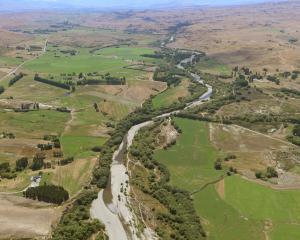The company earlier this week received a consent to establish and operate a crematorium in Dukes Rd North, but required the discharge consent before it could progress its plans further.
A resident living about 300m from the site of the proposed crematorium has since approached the Otago Daily Times concerned about the effects on her property.
Joanne Nicolson, who lives in one of a cluster of homes in Hazlett Rd, about 300m north of the crematorium site, said it was a shock to read about the proposal in the ODT.
She said she was concerned about emissions from the crematorium landing on her property, and devaluing it, and her neighbours were not happy about it, either.
''It was something they should have consulted us about, or at least come around and told us how things would work.''
But in its report recommending the discharge consent be granted, the regional council says the homes' distance from the site, and modelling that showed air pollution on the crematorium site was within national standards, meant the nearby residents would not need to worry about their health or about amenity effects.
Senior resource officer Matthew Bell said because the effects of the crematorium were considered minor, only the adjacent property owners, Otago Business Park Ltd and the regional council, were considered to be potentially affected, and both had given their approval to the project.
The emissions created by an average day at the crematorium (two cremations) were expected to be slightly more than what would be created by one domestic burner a day, he said.
Given that, the sporadic nature of the discharge, the level of pollution in each discharge and modelling done, the council was satisfied the effect on the environment around the site was expected to be no more than minor.
Hopes would have to test emissions to ratify the modelling and to ensure they did not change over time.
The cremator burned excess waste gases in a secondary chamber to minimise odour and smoke emissions and had an emissions management system that kept the level of emissions low and relatively clear.
A condition would also prevent the cremation of caskets that would cause excessive emissions, such as those containing large amounts of plastics or metal.
Another was that the discharges from the cremator did not cause offensive or objectionable odour, dust, particulates, smoke or fume beyond the boundary of the site.
Hope and Sons director Michael Hope said if he had thought there would be any effect on residents he would have discussed the company's plans with them, but the distance was so great, it was clear their houses would not be affected.
He was confident it would not be an issue in an industrial area, surrounded by semi-rural land.












